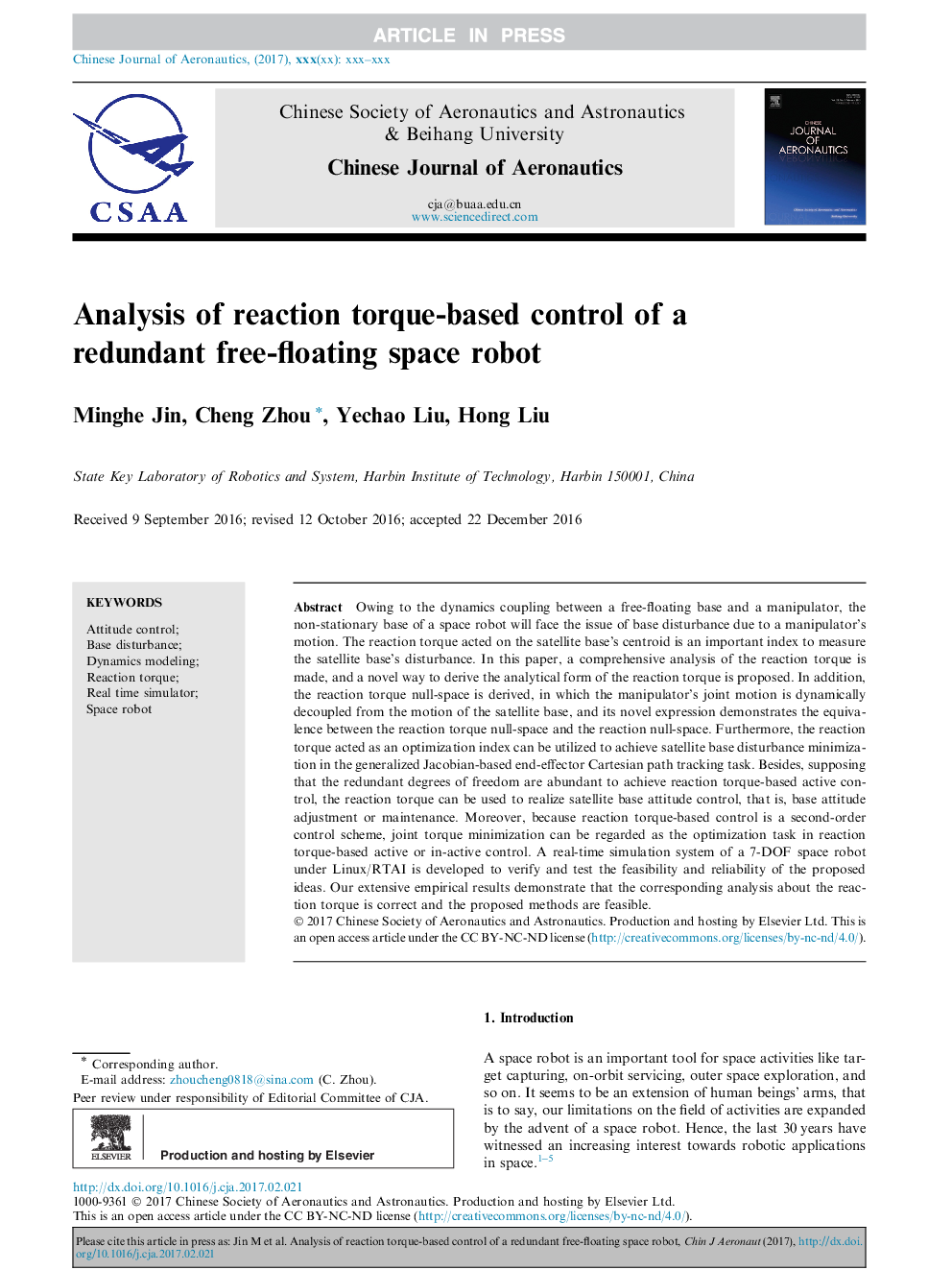| Article ID | Journal | Published Year | Pages | File Type |
|---|---|---|---|---|
| 7153908 | Chinese Journal of Aeronautics | 2017 | 12 Pages |
Abstract
Owing to the dynamics coupling between a free-floating base and a manipulator, the non-stationary base of a space robot will face the issue of base disturbance due to a manipulator's motion. The reaction torque acted on the satellite base's centroid is an important index to measure the satellite base's disturbance. In this paper, a comprehensive analysis of the reaction torque is made, and a novel way to derive the analytical form of the reaction torque is proposed. In addition, the reaction torque null-space is derived, in which the manipulator's joint motion is dynamically decoupled from the motion of the satellite base, and its novel expression demonstrates the equivalence between the reaction torque null-space and the reaction null-space. Furthermore, the reaction torque acted as an optimization index can be utilized to achieve satellite base disturbance minimization in the generalized Jacobian-based end-effector Cartesian path tracking task. Besides, supposing that the redundant degrees of freedom are abundant to achieve reaction torque-based active control, the reaction torque can be used to realize satellite base attitude control, that is, base attitude adjustment or maintenance. Moreover, because reaction torque-based control is a second-order control scheme, joint torque minimization can be regarded as the optimization task in reaction torque-based active or in-active control. A real-time simulation system of a 7-DOF space robot under Linux/RTAI is developed to verify and test the feasibility and reliability of the proposed ideas. Our extensive empirical results demonstrate that the corresponding analysis about the reaction torque is correct and the proposed methods are feasible.
Related Topics
Physical Sciences and Engineering
Engineering
Aerospace Engineering
Authors
Minghe JIN, Cheng ZHOU, Yechao LIU, Hong LIU,
